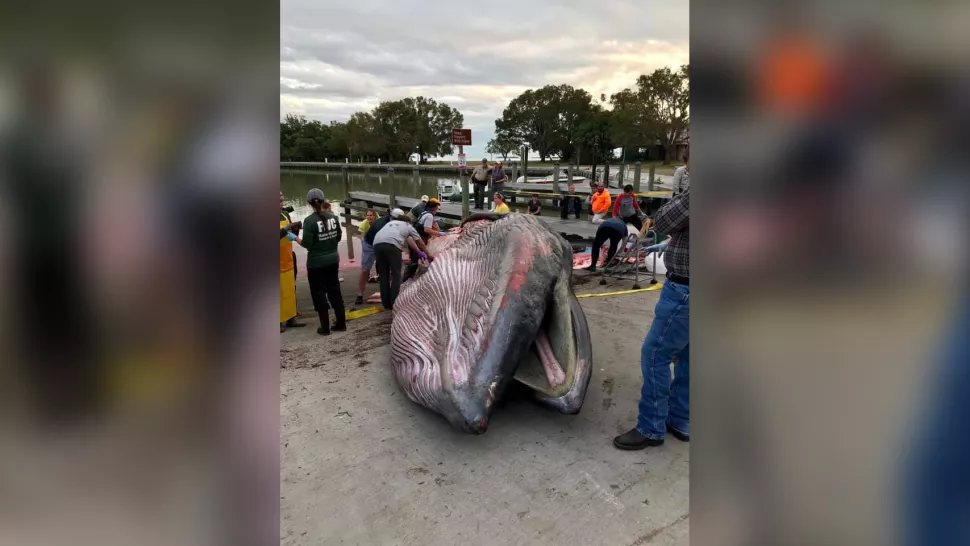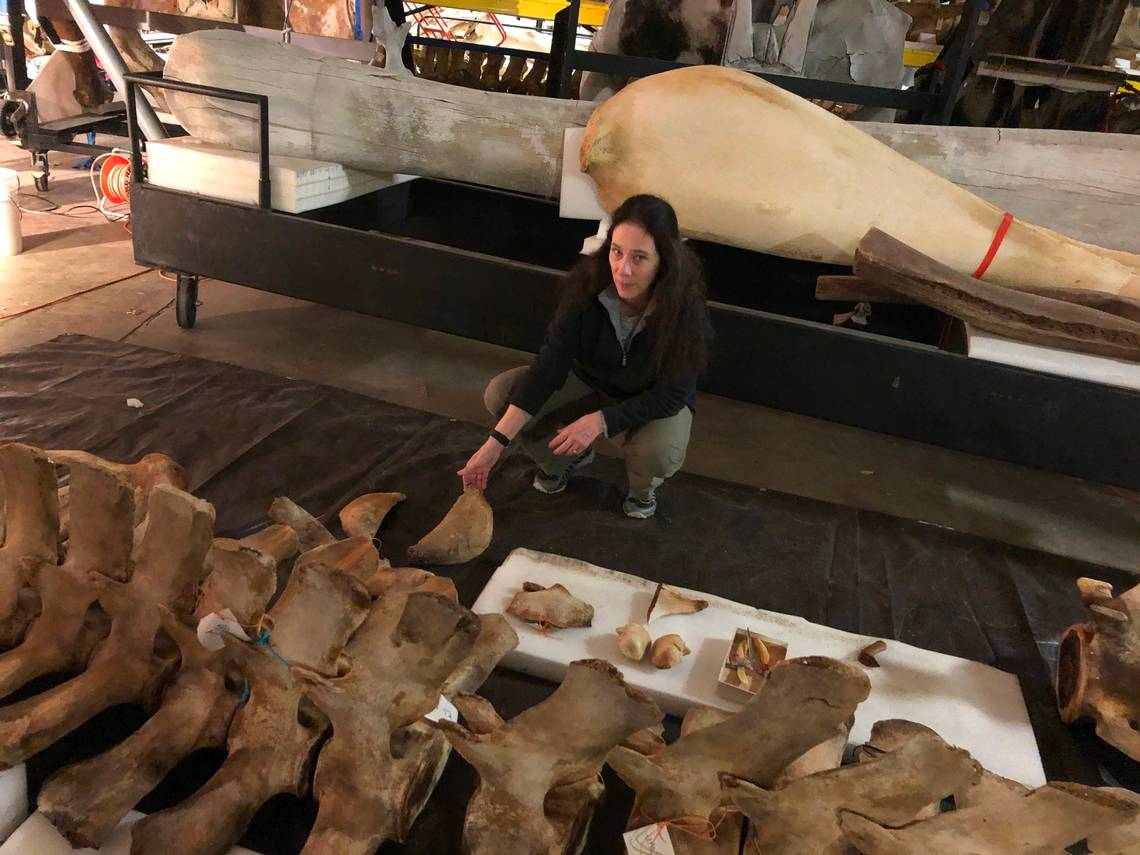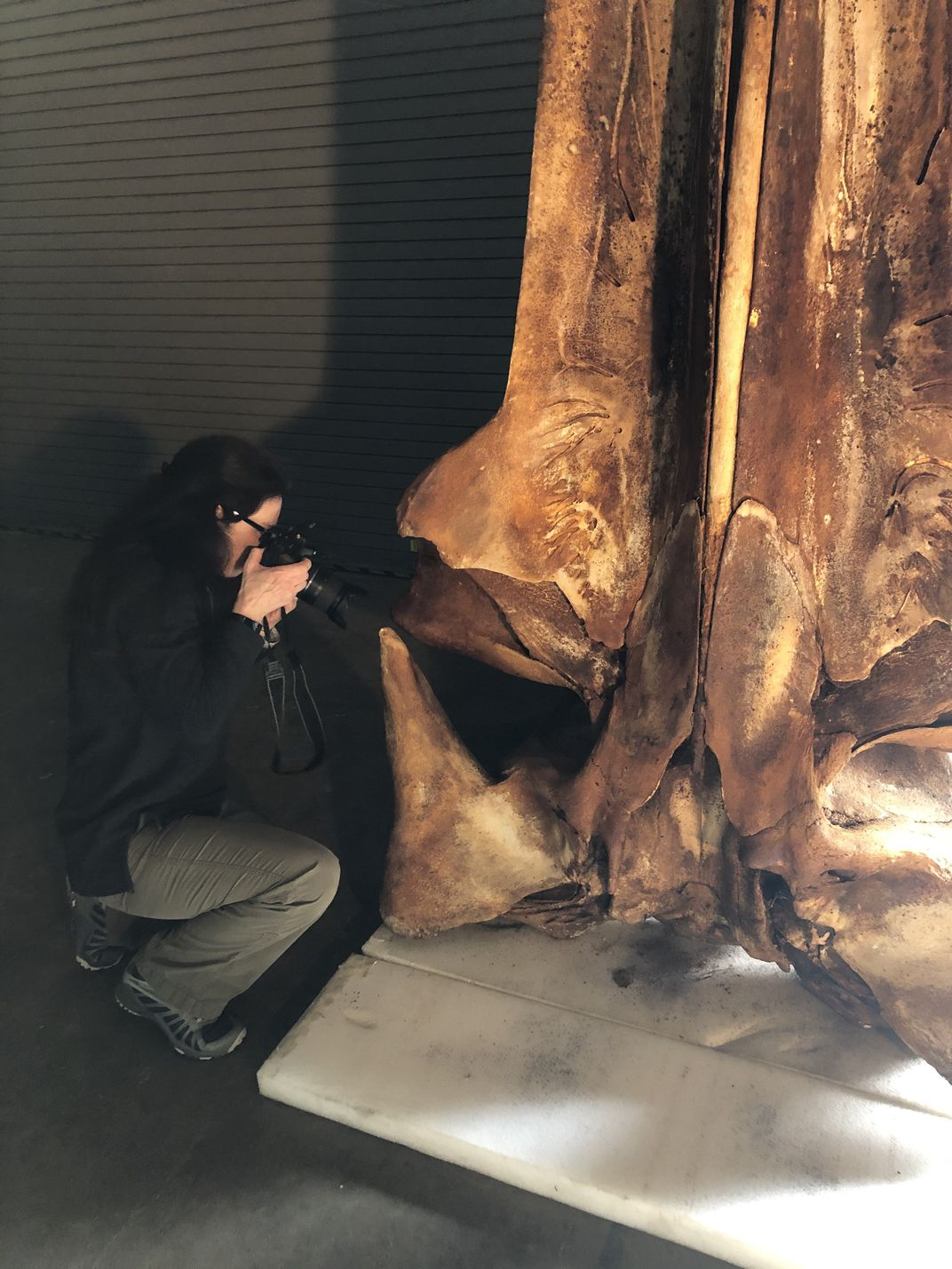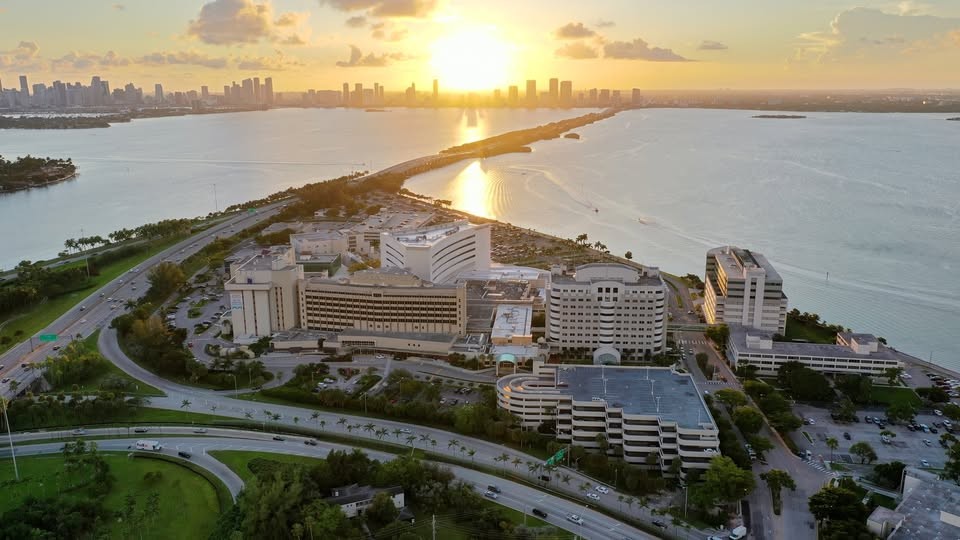Only in the US: Whale Washed Ashore on Florida Coast Confirmed New Species
 |
| This 38-foot-long (11.5 meters) baleen whale stranded off Florida in 2019. Image credit: Florida Everglades National Park. |
When the corpse of the behemoth washed up along Sandy Key — underweight with a hard piece of plastic in its gut — scientists thought it was a subspecies of the Bryde's (pronounced "broodus") whale, a baleen whale species in the same group that includes humpback and blue whales. That subspecies was named Rice's whale. Now, after genetic analysis of other Rice's whales along with an examination of the skull from the Everglades whale, researchers think that, rather than a subspecies, the Rice's whale is an entirely new species that lives in the Gulf of Mexico, Livescience reported.
The discovery, detailed Jan. 10 in the journal Marine Mammal Science, also means that there are fewer than 100 members of this species living on the planet, making them "critically endangered," according to a statement from the National Oceanic and Atmospheric Administration (NOAA).
According to the study, the researchers looked at records of the Bryde's whale in the Caribbean and greater Atlantic Ocean and concluded the whales they spotted were evidence "of an undescribed species of Balaenoptera from the Gulf of Mexico."
The lead study author Patricia Rosel and her co-author, Lynsey Wilcox, both at Southeast Fisheries Science Center, completed the first genetic tests of this whale in 2008, finding that the skull of the Rice's whale was different than that of Bryde's whales.
 |
| Dr. Patricia Rosel with NOAA Fisheries points to bones on a large whale that was found dead in the Everglades in January 2019. Scientists believe the mammal is a new species called the Rice whale. NOAA Fisheries |
In addition to having different skulls, Rice's whales are slightly different in size than Bryde's whales, the new analysis showed. They can weigh up to 60,000 pounds (27,215 kilograms) and grow up to 42 feet (12.8 meters) long, according to NOAA, whereas Bryde's whales have been known to reach upwards of 50 feet (15.2 m) and weigh more than 55,000 pounds (24,947 kg).
Rosel and her colleagues think the whales in the new species can live approximately 60 years, but given that there are so few in existence, researchers need further observation of the whales to get a better idea of their life expectancy.
Given their location in the Gulf of Mexico, Rice's whales are particularly vulnerable to oil spills, vessel strikes and energy exploration and production, NOAA added.
“I was surprised that there could be an unrecognized species of whale out there, especially in our backyard,” Dr Lynsey Wilcox, a geneticist with the US National Oceanic and Atmospheric Administration (NOAA) who helped uncover the new species, told The Guardian. “I never imagined I would be describing a new species in my career, so it is a very exciting discovery.”
| About Gulf of Mexico Bryde's Whale Gulf of Mexico Bryde's (pronounced "broodus") whales are members of the baleen whale family and a subspecies of the Bryde’s whale. With likely less than 100 individuals remaining, Gulf of Mexico Bryde’s whales are one of the most endangered whales in the world. Recovery of the species is dependent upon the protection of each remaining whale. The Gulf of Mexico Bryde’s whale has been consistently located in the northeastern Gulf of Mexico, along the continental shelf break between 100 and about 400 meters depth. They are the only resident baleen whale in the Gulf of Mexico and are distinct from Bryde’s whales worldwide. The most significant threats facing Gulf of Mexico Bryde’s whales are energy exploration and development, oil spills and spill response, vessel strikes, ocean noise, ocean debris, and entanglement in fishing gear. The Gulf of Mexico Bryde’s whale’s very small population size and limited distribution increase their vulnerability. All Bryde’s whales are protected under the Marine Mammal Protection Act, including the Gulf of Mexico subspecies. In 2019, NOAA listed the Gulf of Mexico Bryde’s whale as endangered under the Endangered Species Act. |
 |
| NOAA's Patricia Rosel examines the skull of what is now officially Rice's whale in the collections of the Smithsonian National Museum of Natural History. Photo: NOAA |
New Species Would Be Protected By Marine Mammal Laws
If the Society of Marine Mammalogy Committee on Taxonomy formally accepts the Rice whale as a new species, NOAA will begin the regulatory process to list it as an endangered species under the Marine Mammal Protection Act, according to the press release.
A formal acceptance would make the Rice whale the 15th species of baleen whale, according to NOAA.
It’s not clear how long Rice whales live, but based on the life expectancy of Bryde’s whales, they could live up to 60 years, Rosel said
They grow to between 36 and 42 feet and live in water from 100 to 400 meters deep, or 328 to more than 1,300 feet in depth, according to the NOAA press release.
Scientists speculate that their habitat is the northeastern part of the Gulf of Mexico.
“That’s where they are most regularly seen, though regularly is hard to say because they’re rare, so it’s not like they’re easy to see,” Rosel said.
Rice’s Whale Facts
- Rice’s whales can weigh up to 60,000 pounds (that is 30 tons), which is about five times as heavy as an elephant!
- They can grow up to 42 feet long.
- Like their sister species, they have lateral three ridges on the top of their rostrum (upper jaw area).
- Not much is known about their life expectancy, but closely related species reach sexual maturity at 9-years-old and can live about 60 years.
- The biggest threats to the species include vessel strikes, ocean noise, energy exploration, development and production, oil spills and responses, entanglement in fishing gear, and ocean debris.
- They are found in the Gulf of Mexico in the Southeast United States.
An Endangered Species
The new species retains its protected status under the Endangered Species Act as it was previously listed as an endangered subspecies (Gulf of Mexico Bryde’s whale). It is also protected under the Marine Mammal Protection Act. To date, there are fewer than 100 of these whales remaining, making them critically endangered. If the name Rice’s whale is formally accepted by the Society for Marine Mammalogy Committee on Taxonomy, NOAA Fisheries will go through the regulatory process to update the name used in the endangered species listing.
For NOAA scientists, this discovery is exciting and will allow them to better understand and protect this rare baleen whale. Teamwork and collaboration are important throughout this process. NOAA Fisheries truly appreciates the contributions of so many of our research partners. Without building on previous work and the data provided by our fellow scientists, the opportunity to announce a new species would not be possible.
| Whale watching in Florida Best places in Floria for whale watching You can see majestic right whales along the Northeastern Florida shoreline. The area between Jacksonville and Cape Canaveral is the premier whale-watching location in the Sunshine State. Many nature enthusiasts try spotting whales from the shore at 800-ft (243 m) Flagler Beach Pier, along A1A highway. People have also seen whales from St. Augustine's Beach Pier and from Daytona Beach Mainstreet Pier and especially the Sunglow Fishing Pier. Whale-watching tours Unfortunately, there are no organized whale watching tours in Florida since whale spotting is rather hard to predict. Also, mothers and calves might be stressed because of tourist boats. There have been cases when calves were killed as a result of a collision with boats. Vessels are required to stay 500 yards (457 m) away from whales. However, Florida residents and visitors see whales in the ocean all the time, so everyone might get lucky. Also, there's a chance to spot whales on a dolphin-watching cruise. Florida Water Tours organize 2-hour sea excursions in Matanzas Bay all year round. There have been numerous whale sightings near Matanzas Inlet. Whale-watching season February is the best month to spot whales in northeastern Florida. Their calving season also falls on late winter. January is another good month when whales are spotted frequently. Chances decrease in March. In April calves get stronger, and whales head back to New England and Canada, drawn by the Gulf Stream currents, so they move further away from the shore. Whale-watching tips Observing whales from the shore is rather tricky. Make sure to get powerful binoculars and a camera with a telephoto lens if you plan to take pictures. Keep an eye for whale spouts as well as birds and dolphins that sometimes can be seen around whales. Where to stay Jacksonville, St. Augustine, Daytona Beach, and Flager Beach have many waterfront hotels with beautiful ocean views. Winter is also time for big discounts on accommodation. |
 What is Critical Race Theory? What is Critical Race Theory? The phrase “critical race theory” has been hotter again after it was condemned by Florida Gov. Ron DeSantis. Let’s check out what it is, who ... |
 Who is Ron DeSantis - Florida's Governor: Biography, Time Life, Career and Family Who is Ron DeSantis - Florida's Governor: Biography, Time Life, Career and Family Ron DeSantis, who was first elected in 2018 is the 46th and current governor of Florida. Let's find out some information about Florida's governor with ... |
 Top 5 local foods everyone having a visit to Florida should try Top 5 local foods everyone having a visit to Florida should try If you visit Florida and don't know what to eat, let's take a look at the top 5 local foods that everyone visiting or moving ... |


























